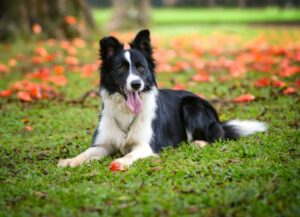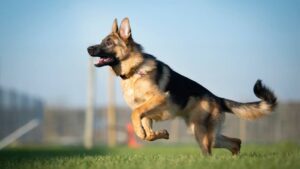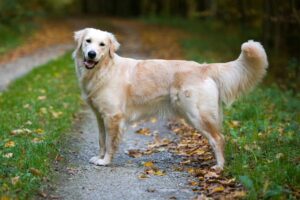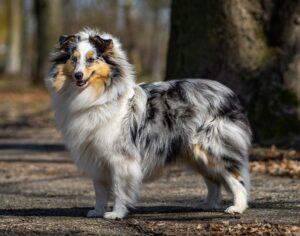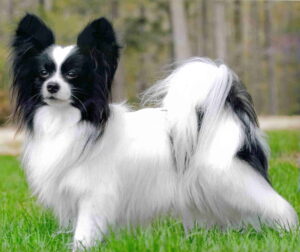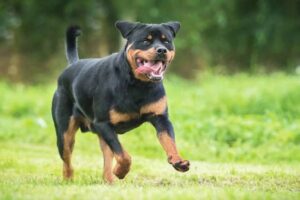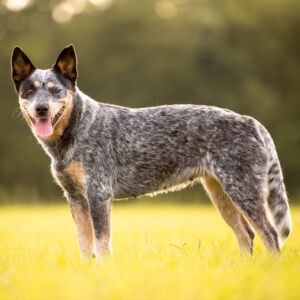
Top 10 most intelligent dog.
Border Collie
Poodle
German Shepherd
Golden Retriever
Doberman Pinscher
Shetland Sheepdog
Labrador Retriever
Papillion
Rottweiler
Australian Cattle Dog
Basic information about dogs:
Border Collie
Certainly, here’s a basic overview of the Border Collie breed:
1. Origin and History:
The Border Collie is a herding dog breed that originated in the border region between England and Scotland. It was primarily bred for its herding abilities and is known for its intelligence and agility.
2. Appearance:
Border Collies are medium-sized dogs with a well-proportioned body. They have a double coat that can be rough or smooth. Coat colors vary, including black and white, red and white, tricolor, merle, and more. They often have a distinctive “collar” of white fur around their neck.
3. Temperament:
Border Collies are renowned for their intelligence, trainability, and intense work ethic. They are highly energetic and thrive on mental stimulation and physical activity. They are also known for their strong herding instincts, which can manifest as nipping at heels or other herding behaviors if not properly channeled.
4. Intelligence:
Border Collies are considered one of the most intelligent dog breeds in the world. They excel in obedience training and can learn a wide range of commands and tricks. Their problem-solving skills and ability to understand complex tasks make them popular in dog sports and agility competitions.
5. Exercise Needs:
Due to their high energy levels, Border Collies require regular exercise and mental stimulation. Daily walks, playtime, and engaging activities are essential to keep them happy and prevent boredom-related behavior problems.
6. Grooming:
Border Collies have a moderate grooming requirement. Their double coat needs regular brushing to remove loose hair and prevent matting. They shed seasonally, and during shedding periods, more frequent brushing may be necessary.
7. Health Considerations:
Like all breeds, Border Collies can be prone to certain health issues, including hip dysplasia, eye problems (such as Collie eye anomaly), and epilepsy. Responsible breeding and regular veterinary check-ups can help maintain their health.
8. Living Environment:
Border Collies thrive in active households with plenty of room to run and play. They may not be suitable for apartment living unless their exercise needs are met through daily activities and exercise.
9. Socialization:
Early socialization is crucial to help Border Collies become well-adjusted and well-behaved dogs. They tend to be reserved around strangers but are loyal and affectionate with their families.
10. Lifespan:
Border Collies typically have a lifespan of 12 to 15 years when properly cared for.
In summary, Border Collies are highly intelligent and energetic dogs known for their herding abilities. They make excellent companions for active individuals or families who can provide them with the mental and physical stimulation they need. Proper training, socialization, and exercise are key to raising a well-rounded Border Collie.
Poodle
Certainly, here’s some basic information about the Poodle breed:
1. Origin and History:
The Poodle is a breed with a long and distinguished history. It is believed to have originated in Germany, where it was known as the “Poodle,” meaning “to splash in water.” The breed’s distinctive appearance and hypoallergenic coat made it popular with European nobility.
2. Appearance:
Poodles come in three main sizes: Standard, Miniature, and Toy. They are known for their elegant and curly coat, which is hypoallergenic and doesn’t shed much. Poodles come in various solid colors, including black, white, apricot, and silver. They have a distinctive face with expressive eyes and long, floppy ears.
3. Temperament:
Poodles are known for their intelligence, alertness, and friendly nature. They are highly trainable and excel in obedience and agility training. They are also known for their loyal and affectionate personalities, making them excellent family pets.
4. Intelligence:
Poodles are often considered one of the most intelligent dog breeds. They are quick learners and are known for their problem-solving abilities. This intelligence makes them highly trainable and versatile in various roles, including as service dogs and therapy dogs.
5. Exercise Needs:
Poodles are active dogs that require regular exercise to stay healthy and happy. Daily walks, playtime, and mental stimulation through puzzle toys and training sessions are important to prevent boredom.
6. Grooming:
Poodles have a unique coat that requires regular grooming to keep it in good condition. Many Poodle owners choose to keep their dogs in a distinctive “poodle cut” to reduce matting and tangles. Regular brushing, bathing, and professional grooming are typically necessary to maintain their coat.
7. Health Considerations:
Poodles are generally healthy dogs, but like all breeds, they can be prone to certain health issues, including hip dysplasia, eye problems, and skin conditions. Responsible breeding and regular veterinary check-ups are important for their well-being.
8. Living Environment:
Poodles adapt well to both apartment and house living, but they do require regular exercise and mental stimulation. They are social dogs and thrive on interaction with their families.
9. Socialization:
Poodles are known for their friendly and outgoing nature. Early socialization is important to ensure they are well-adjusted and comfortable around other dogs and people.
10. Lifespan:
Poodles generally have a long lifespan of 12 to 15 years, provided they receive proper care and attention.
In summary, Poodles are highly intelligent and versatile dogs known for their distinctive appearance and hypoallergenic coat. They make great companions for families and individuals who can provide them with the mental and physical stimulation they need, as well as the grooming care their coat requires.
German Shepherd
Here is some basic information about the German Shepherd breed:
1. Origin and History:
The German Shepherd, also known as the Alsatian in some countries, originated in Germany in the late 19th century. It was initially bred for herding and later gained recognition for its intelligence and versatility in various roles.
2. Appearance:
German Shepherds are medium to large-sized dogs with a strong, muscular build. They have a distinctive wolf-like appearance with erect ears and a long, bushy tail. Their coat is typically a combination of black and tan or sable, but other colors can occur.
3. Temperament:
German Shepherds are known for their intelligence, loyalty, and protective instincts. They are often described as confident, courageous, and trainable. These dogs are known for their versatility and excel in various roles, including as working dogs, service dogs, and family pets.
4. Intelligence:
German Shepherds are one of the most intelligent dog breeds. They are quick learners and can be trained for a wide range of tasks, including obedience, search and rescue, police work, and more.
5. Exercise Needs:
German Shepherds are highly active dogs that require regular exercise to maintain their physical and mental health. They enjoy activities such as daily walks, runs, and engaging playtime. Lack of exercise can lead to behavioral issues.
6. Grooming:
Their double coat requires regular brushing to control shedding, especially during seasonal changes. While they shed year-round, they tend to shed more during spring and fall. Routine grooming helps keep their coat healthy and reduces matting.
7. Health Considerations:
German Shepherds are generally a healthy breed, but they can be prone to certain genetic health issues, including hip dysplasia, elbow dysplasia, bloat, and degenerative myelopathy. Responsible breeding practices and regular veterinary check-ups are essential to maintain their health.
8. Living Environment:
German Shepherds adapt well to both city and suburban living as long as they receive the necessary exercise and mental stimulation. They are protective of their families and make excellent watchdogs.
9. Socialization:
Early socialization is crucial for German Shepherds to ensure they are well-adjusted and comfortable around other dogs and people. They can be reserved around strangers but are typically loyal and affectionate with their families.
10. Lifespan:
German Shepherds have an average lifespan of 10 to 13 years when properly cared for.
In summary, German Shepherds are intelligent, loyal, and versatile dogs that excel in various roles. They make excellent companions for active individuals or families who can provide them with the physical and mental stimulation they need. Proper training and socialization are key to raising a well-behaved German Shepherd.
Golden Retriever
Here is some basic information about the Golden Retriever breed:
1. Origin and History:
Golden Retrievers originated in Scotland in the mid-19th century. They were originally bred as hunting dogs, specifically for retrieving waterfowl. Today, they are known for their friendly and gentle temperament.
2. Appearance:
Golden Retrievers are medium to large-sized dogs with a well-proportioned, athletic build. They have a dense double coat that is usually golden in color, hence their name. Their coat is typically wavy or straight, and they have a friendly and expressive face.
3. Temperament:
Golden Retrievers are renowned for their friendly, intelligent, and outgoing nature. They are known for their loyalty, patience, and willingness to please. These dogs are excellent family pets and are often described as gentle giants.
4. Intelligence:
Golden Retrievers are highly intelligent dogs and rank among the top breeds in terms of trainability. They excel in obedience training and can learn a wide range of commands and tasks.
5. Exercise Needs:
Golden Retrievers are active dogs that require regular exercise to stay healthy and happy. They enjoy activities such as daily walks, fetch, and swimming. Mental stimulation, such as puzzle toys and training sessions, is also important to prevent boredom.
6. Grooming:
Their double coat requires regular brushing to prevent matting and reduce shedding. They do shed seasonally, and more frequent brushing may be needed during shedding periods. Routine grooming and occasional baths help maintain their coat’s health and appearance.
7. Health Considerations:
While Golden Retrievers are generally healthy dogs, they can be prone to certain health issues, including hip dysplasia, elbow dysplasia, and various heart and eye conditions. Responsible breeding practices and regular veterinary check-ups are crucial.
8. Living Environment:
Golden Retrievers adapt well to various living environments, including apartments and houses, as long as they receive the necessary exercise and mental stimulation. They are known for their sociable nature and typically get along well with other pets.
9. Socialization:
Golden Retrievers are friendly and outgoing, making them easy to socialize. Early socialization helps them become well-adjusted and comfortable around other dogs and people.
10. Lifespan:
Golden Retrievers have an average lifespan of 10 to 12 years when properly cared for.
In summary, Golden Retrievers are known for their friendly and gentle nature. They are highly intelligent and trainable, making them wonderful family pets and service dogs. Regular exercise, socialization, and grooming are essential for their well-being and happiness.
Doberman Pinscher
Certainly, here is some basic information about the Doberman Pinscher breed:
1. Origin and History:
The Doberman Pinscher, often simply referred to as the Doberman, was developed in the late 19th century by a German tax collector named Louis Dobermann. He aimed to create a loyal and protective breed for personal protection during his work. The breed was further refined by breeders after his death.
2. Appearance:
Dobermans are medium to large-sized dogs known for their sleek and powerful appearance. They have a short coat that comes in various colors, with the most common being black and rust, red and rust, and blue and rust. They have a compact, muscular body and a distinctive wedge-shaped head with cropped ears (though ear cropping is becoming less common).
3. Temperament:
Doberman Pinschers are known for their loyalty, intelligence, and protective instincts. They are often described as alert, confident, and assertive. While they can be wary of strangers, they are typically very loyal and affectionate with their families.
4. Intelligence:
Dobermans are highly intelligent dogs and are known for their problem-solving abilities. They are quick learners and excel in obedience training and various canine sports.
5. Exercise Needs:
Dobermans are an active breed that requires regular exercise and mental stimulation. Daily walks, playtime, and activities such as agility or obedience training are essential to keep them physically and mentally fit.
6. Grooming:
Their short coat is relatively low-maintenance and requires minimal grooming. Regular brushing helps keep their coat healthy, and baths can be given as needed. Routine care of their ears and teeth is also important.
7. Health Considerations:
Like many breeds, Dobermans can be prone to certain health issues, including hip dysplasia, heart conditions (such as dilated cardiomyopathy), and von Willebrand’s disease (a bleeding disorder). Responsible breeding and regular veterinary check-ups are important for their well-being.
8. Living Environment:
Dobermans can adapt well to apartment or house living as long as they receive the necessary exercise and mental stimulation. They are protective by nature, making them good watchdogs, but early socialization is important to ensure they are well-behaved around guests.
9. Socialization:
Early socialization is crucial for Dobermans to help them become well-adjusted and comfortable around other dogs and people. Proper training and socialization can also help them control their protective instincts.
10. Lifespan:
Dobermans have an average lifespan of 10 to 12 years when properly cared for.
In summary, Doberman Pinschers are loyal, intelligent, and protective dogs known for their sleek appearance. They make excellent companions for active individuals or families who can provide them with the exercise and training they need. Responsible ownership, socialization, and regular veterinary care are key to raising a well-adjusted Doberman.
Shetland Sheepdog
Here is some basic information about the Shetland Sheepdog breed:
1. Origin and History:
The Shetland Sheepdog, often referred to as the “Sheltie,” originated in the Shetland Islands of Scotland. It was originally bred as a herding dog to work with small livestock like sheep and ponies.
2. Appearance:
Shetland Sheepdogs are small to medium-sized dogs with a sturdy build. They have a double coat with a soft, dense undercoat and a longer, straight outer coat. Their coat colors can vary and include sable, black, blue merle, and more. They have a distinctive mane of fur around their neck and a fox-like face with almond-shaped eyes.
3. Temperament:
Shetland Sheepdogs are known for their intelligence, loyalty, and gentle nature. They are often described as alert, responsive, and eager to please. They make excellent family pets and are known for being good with children.
4. Intelligence:
Shetland Sheepdogs are highly intelligent and excel in obedience training and agility. They are quick learners and enjoy mental stimulation.
5. Exercise Needs:
While Shelties are not as high-energy as some herding breeds, they still require regular exercise to stay healthy and happy. Daily walks, playtime, and mental stimulation through games and training are important.
6. Grooming:
Shetland Sheepdogs have a double coat that requires regular brushing to prevent matting and reduce shedding. They do shed year-round and more during seasonal changes. Occasional baths and routine care of their ears and teeth are also important.
7. Health Considerations:
Shetland Sheepdogs are generally a healthy breed, but like all breeds, they can be prone to certain health issues, including hip dysplasia, eye problems (such as progressive retinal atrophy), and epilepsy. Responsible breeding and regular veterinary check-ups are important for their well-being.
8. Living Environment:
Shelties adapt well to various living environments, including apartments and houses, as long as they receive the necessary exercise and mental stimulation. They are known for their alertness and make good watchdogs.
9. Socialization:
Early socialization is important for Shetland Sheepdogs to ensure they are well-adjusted and comfortable around other dogs and people. They may be reserved around strangers but are typically affectionate with their families.
10. Lifespan:
Shetland Sheepdogs have an average lifespan of 12 to 14 years when properly cared for.
In summary, Shetland Sheepdogs are intelligent, loyal, and affectionate dogs known for their herding abilities and family-friendly nature. They make wonderful companions for families or individuals who can provide them with the exercise and mental stimulation they need. Proper training, socialization, and grooming care are essential for their well-being.
Labrador Retriever
Here is some basic information about the Labrador Retriever breed:
1. Origin and History:
The Labrador Retriever, commonly known as the “Lab,” originated in Newfoundland, Canada. They were initially used as fishing dogs to retrieve nets and catch fish that escaped from fishing lines. Later, they were bred in England and refined as hunting and retrieving dogs.
2. Appearance:
Labradors are medium to large-sized dogs with a well-muscled and athletic build. They have a short, dense, water-resistant double coat that comes in three primary colors: black, yellow, and chocolate. They have expressive, brown or hazel eyes and a distinctive otter-like tail.
3. Temperament:
Labrador Retrievers are known for their friendly, outgoing, and gentle nature. They are often described as sociable, obedient, and eager to please. They have a playful and affectionate personality, which makes them excellent family pets.
4. Intelligence:
Labradors are highly intelligent dogs and are among the top breeds in terms of trainability. They excel in obedience training, search and rescue operations, and as guide dogs for the visually impaired.
5. Exercise Needs:
Labradors are active dogs that require regular exercise to stay physically and mentally healthy. They enjoy activities like fetching, swimming, and hiking. Daily exercise and playtime are essential to prevent boredom.
6. Grooming:
Their short coat is relatively low-maintenance and requires minimal grooming. Regular brushing helps keep their coat healthy and reduces shedding. Labs do shed, so brushing can help manage the amount of loose hair.
7. Health Considerations:
Labradors are generally a healthy breed, but they can be prone to certain health issues, including hip and elbow dysplasia, progressive retinal atrophy, and obesity. Responsible breeding practices and regular veterinary check-ups are important for their well-being.
8. Living Environment:
Labradors adapt well to various living environments, including apartments and houses, as long as they receive the necessary exercise and mental stimulation. They are known for their friendly and sociable nature.
9. Socialization:
Early socialization is crucial for Labradors to ensure they are well-adjusted and comfortable around other dogs and people. They are typically good with children and other pets.
10. Lifespan:
Labrador Retrievers have an average lifespan of 10 to 12 years when properly cared for.
In summary, Labrador Retrievers are known for their friendly and affectionate nature. They make excellent family pets and are highly trainable, making them versatile in various roles. Regular exercise, socialization, and responsible ownership are key to raising a happy and well-adjusted Labrador Retriever.
Papillion
Here is some basic information about the Papillon breed:
1. Origin and History:
The Papillon, also known as the Continental Toy Spaniel, is one of the oldest toy breeds in Europe. Its name is French for “butterfly,” which refers to its distinctive butterfly-like ears. Papillons were originally bred in France and are believed to have descended from small spaniel-type dogs.
2. Appearance:
Papillons are small, elegant dogs with a delicate and fine-boned appearance. They have a graceful, fine coat that is typically white with patches of color, such as black, sable, or red. Their most distinctive feature is their large, fringed ears that resemble butterfly wings.
3. Temperament:
Papillons are known for their alert, friendly, and intelligent nature. They are often described as lively, curious, and affectionate dogs. Despite their small size, they are confident and can be quite fearless.
4. Intelligence:
Papillons are highly intelligent and trainable. They excel in obedience training and are known for their agility and ability to learn tricks. They enjoy mental stimulation and problem-solving activities.
5. Exercise Needs:
While Papillons are small, they are still active dogs that require regular exercise. Daily walks, playtime, and short training sessions are essential to keep them physically and mentally engaged.
6. Grooming:
Papillons have a fine, silky coat that requires regular grooming to prevent matting and tangling. Brushing a few times a week is usually sufficient to maintain their coat. They are moderate shedders.
7. Health Considerations:
Papillons are generally a healthy breed, but they can be prone to certain health issues, including dental problems due to their small mouth size, patellar luxation (knee joint issues), and eye conditions. Regular dental care and veterinary check-ups are important for their well-being.
8. Living Environment:
Papillons adapt well to various living environments, including apartments and houses. They are small enough to comfortably live in smaller spaces but still enjoy outdoor playtime.
9. Socialization:
Early socialization is important for Papillons to ensure they are well-adjusted and comfortable around other dogs and people. They tend to be friendly and sociable with other dogs and pets.
10. Lifespan:
Papillons have an average lifespan of 13 to 16 years when properly cared for.
In summary, Papillons are small, intelligent, and lively dogs known for their distinctive butterfly-like ears. They make excellent companions for individuals or families looking for an alert and affectionate small breed. Regular exercise, grooming, and socialization are important for their well-being and happiness.
Rottweiler
Here is some basic information about the Rottweiler breed:
1. Origin and History:
Rottweilers are a breed with ancient roots, dating back to the Roman Empire. They were originally used as herding and working dogs, particularly for driving cattle to market. Their name comes from the town of Rottweil in Germany, where they were commonly used by butchers.
2. Appearance:
Rottweilers are large and powerful dogs with a robust and muscular build. They have a short, dense, and glossy double coat that is typically black with rust or mahogany markings. Their broad head is adorned with a strong jaw and a distinctive black nose.
3. Temperament:
Rottweilers are known for their loyalty, confidence, and protective instincts. They are often described as calm, alert, and courageous. They are fiercely loyal to their families and can be gentle giants when properly trained and socialized.
4. Intelligence:
Rottweilers are highly intelligent dogs and are known for their ability to learn and perform a wide range of tasks. They are trainable and excel in obedience training and as working dogs in roles such as search and rescue, police work, and as service dogs.
5. Exercise Needs:
Rottweilers are active dogs that require regular exercise and mental stimulation. Daily walks, playtime, and activities such as obedience training are essential to keep them happy and well-adjusted.
6. Grooming:
Their short coat is relatively low-maintenance and requires regular brushing to control shedding. They do shed, but it is manageable with routine grooming. Occasional baths and attention to their nails and ears are also important.
7. Health Considerations:
Rottweilers can be prone to certain health issues, including hip and elbow dysplasia, bloat (gastric torsion), heart problems, and certain types of cancer. Responsible breeding and regular veterinary check-ups are crucial for their well-being.
8. Living Environment:
Rottweilers can adapt well to various living environments, including apartments and houses, as long as they receive the necessary exercise and mental stimulation. They are protective by nature and make good watchdogs.
9. Socialization:
Early socialization is important for Rottweilers to ensure they are well-adjusted and comfortable around other dogs and people. Proper training and socialization can help manage their protective instincts.
10. Lifespan:
Rottweilers have an average lifespan of 8 to 10 years when properly cared for.
In summary, Rottweilers are loyal, intelligent, and protective dogs known for their strong and imposing appearance. They make devoted family pets when raised with proper training, socialization, and care. Responsible ownership and attention to their exercise and health needs are key to raising a well-adjusted Rottweiler.
Australian Cattle Dog
Here is some basic information about the Australian Cattle Dog:
1. Origin and History:
The Australian Cattle Dog, also known as the Queensland Heeler or Blue Heeler, originated in Australia in the 19th century. It was developed to help Australian cattlemen in their herding work, particularly with driving cattle over long distances.
2. Appearance:
Australian Cattle Dogs are medium-sized, compact dogs with a sturdy build. They have a short double coat that is typically blue or red speckled with various patterns, including mottling, ticking, or patches. Their ears are typically upright, and they have a bushy tail.
3. Temperament:
Australian Cattle Dogs are known for their intelligence, work ethic, and loyalty. They are often described as alert, energetic, and protective. They are highly devoted to their families and can be wary of strangers.
4. Intelligence:
Australian Cattle Dogs are one of the smartest dog breeds. They excel in obedience training and can learn complex tasks quickly. They thrive on mental stimulation and problem-solving activities.
5. Exercise Needs:
Cattle Dogs are highly active and energetic dogs that require regular exercise to stay happy and healthy. They need plenty of physical activity and mental challenges, such as puzzle toys and agility training.
6. Grooming:
Their short coat is relatively low-maintenance and requires regular brushing to control shedding. They do shed year-round, but grooming is not overly demanding.
7. Health Considerations:
Australian Cattle Dogs are generally a healthy breed but can be prone to certain health issues, including hip dysplasia, deafness (particularly in white-coated individuals), and progressive retinal atrophy. Responsible breeding practices and regular veterinary check-ups are important.
8. Living Environment:
Australian Cattle Dogs are best suited to an active household with space for them to run and play. They are not ideal for apartment living unless they receive ample exercise.
9. Socialization:
Early socialization is important for Australian Cattle Dogs to ensure they are well-adjusted and comfortable around other dogs and people. They have a strong herding instinct and may try to herd other pets or children.
10. Lifespan:
Australian Cattle Dogs have an average lifespan of 12 to 16 years when properly cared for.
In summary, Australian Cattle Dogs are intelligent, active, and loyal working dogs. They excel in herding and various dog sports and make great companions for individuals or families with an active lifestyle. Proper exercise, training, and socialization are key to raising a well-adjusted and happy Cattle Dog.

